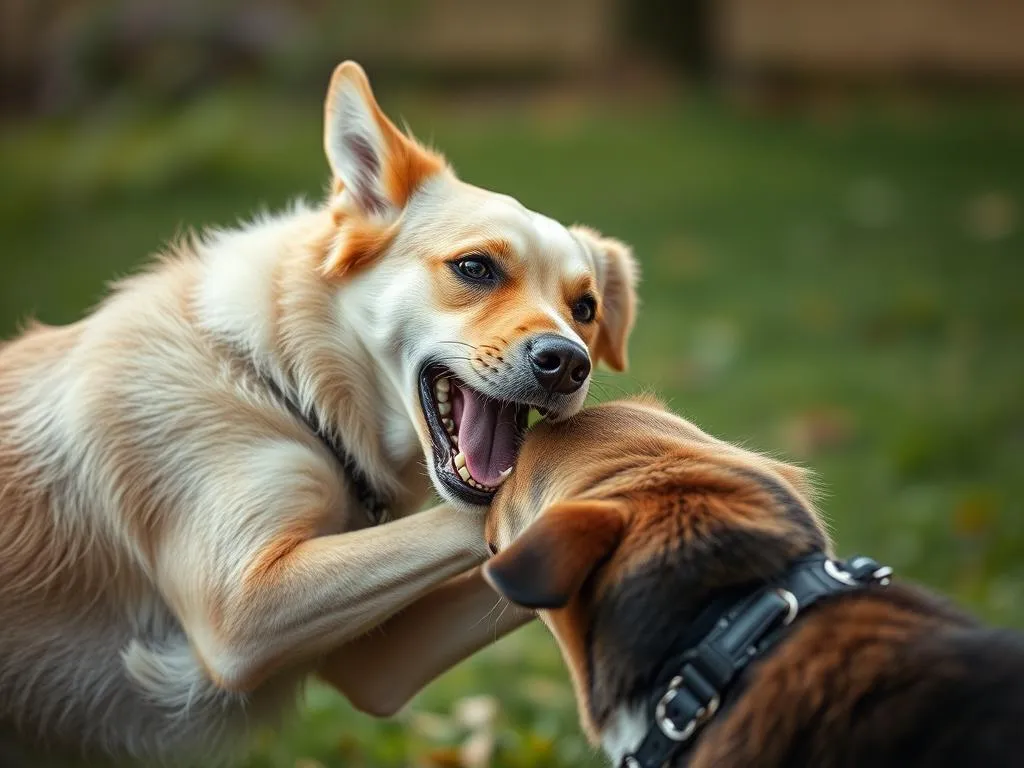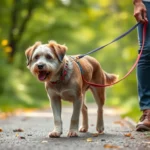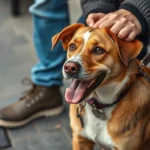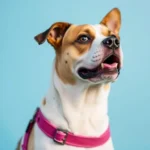
Introduction
Socialization is a crucial aspect of a dog’s development, shaping their behaviors and interactions with both humans and other dogs. However, not all play is created equal. Some dogs engage in rough play, which can lead to injuries, stress, and anxiety for both the dog and their playmates. Understanding how to stop my dog playing rough with other dogs is essential for ensuring your pet has enjoyable and safe interactions. This guide will provide practical strategies to manage and reduce rough play among dogs.
Understanding Dog Play Behavior
Types of Play
Dogs exhibit various play styles, each with unique characteristics. Here are some common types of play:
- Chasing: One dog runs after another, fostering excitement and agility.
- Wrestling: Dogs engage in physical contact, often rolling and tumbling.
- Tugging: Dogs pull on a toy while the other dog tries to get it away.
It’s vital to differentiate between healthy play and rough play. Healthy play includes mutual consent and clear signals between dogs, while rough play often involves excessive growling, biting, or mounting, which can escalate into fights.
Signs of Rough Play
Identifying signs of rough play is essential for intervention. Look for behaviors such as:
- Growling: While some growling can be playful, excessive or deep growls may indicate discomfort or aggression.
- Biting: Playful bites are often gentle, but hard bites can signal that the play has turned rough.
- Excessive Barking: If barking becomes frantic or aggressive, it could signify that the play is not going well.
It’s crucial to differentiate between play aggression and real aggression. Play aggression is often characterized by a lack of intent to harm, while real aggression can lead to serious injuries.
Factors Influencing Play Behavior
Several factors can influence how dogs play together. These include:
- Age: Puppies often play more roughly than older dogs, who may prefer gentler interactions.
- Breed: Some breeds are more prone to rough play due to their energy levels and play styles.
- Temperament: A dog’s personality can significantly affect their play behavior. More dominant dogs may instigate rough play.
Previous experiences also play a role. Dogs that have had limited socialization may not understand appropriate play behaviors, leading to rough interactions.
Assessing Your Dog’s Behavior
Observing Play Interactions
To manage and reduce rough play, start by observing your dog during interactions with others. Here are some tips:
- Watch body language: Pay attention to the posture and facial expressions of both dogs.
- Look for breaks: Healthy play often includes pauses where dogs take a moment to regroup.
- Identify the play initiator: Understanding who starts the rough play helps address the behavior.
Understanding Triggers
Identifying triggers for rough play can help you manage your dog’s behavior. Common triggers include:
- Excitement: High energy situations can lead to rough play as dogs become overstimulated.
- Frustration: If a dog feels cornered or unable to engage effectively, they may resort to rougher behaviors.
- Anxiety: Nervous dogs may act out during play as a coping mechanism.
Keeping a Play Diary
Keeping a play diary can be invaluable for tracking your dog’s interactions. Document incidents of rough play, noting the context and outcomes. Include:
- Date and time of play session
- Dogs involved
- Duration of play
- Specific behaviors observed
This diary will help you identify patterns and triggers, allowing for more effective interventions.
Techniques to Manage and Reduce Rough Play
Training Commands
Teaching essential commands can significantly help in managing your dog’s behavior during play. Focus on commands such as:
- Leave it: This command can interrupt rough play and redirect your dog’s attention.
- Come: Useful for calling your dog away from a situation that’s escalating.
- Settle: This command helps your dog calm down and refocus their energy.
Reinforce these commands through consistent training, practicing them in various environments to ensure your dog responds well during play.
Redirecting Behavior
When you notice your dog starting to play rough, redirect their behavior. Here are some strategies:
- Use toys: Introduce a toy to redirect their focus. This encourages them to engage in a more appropriate play style.
- Treats: Offer treats for calm behavior, reinforcing positive actions during play.
- Commands: Utilize the commands you’ve taught to steer your dog away from rough play.
Structured Playtime
Creating structured playtime can help manage interactions between dogs. Consider these strategies:
- Organized playdates: Set up playdates with known dogs who have compatible play styles.
- Rules for playtime: Establish guidelines, such as time limits and breaks to prevent overstimulation.
By structuring playtime, you can better control the environment and reduce rough play incidents.
Socialization and Controlled Exposure
Importance of Socialization
Proper socialization is vital for preventing rough play. Dogs that are well-socialized learn appropriate behaviors through interactions with other dogs. Start socializing your dog at a young age, ideally between 3 to 14 weeks, using positive experiences to foster healthy interactions.
Gradual Exposure to Other Dogs
Gradually introducing your dog to other dogs is essential for building confidence and reducing rough play. Here’s how you can do this:
- Start small: Begin with one calm, friendly dog to avoid overwhelming your pet.
- Short sessions: Keep initial interactions brief, allowing for positive experiences without escalation.
- Positive reinforcement: Reward your dog for calm behavior during introductions to reinforce good habits.
Choosing the Right Playmates
Selecting suitable playmates is crucial for managing your dog’s interactions. Look for dogs that exhibit:
- Similar energy levels: Dogs with matching energy levels are less likely to instigate rough play.
- Compatible play styles: Ensure that both dogs enjoy similar types of play to foster healthy interactions.
- Positive temperaments: Choose dogs that are well-socialized and exhibit friendly behaviors to reduce the likelihood of rough play.
Professional Help
When to Seek a Trainer
If your dog’s rough play continues despite your efforts, consider seeking professional help. Signs that it may be time to consult a trainer include:
- Persistent rough play despite interventions
- Signs of aggression towards other dogs or humans
- Difficulty in managing your dog’s behavior on a leash
Working with a certified dog trainer can provide valuable insights and tailored strategies to address your dog’s specific needs.
Understanding Training Techniques
Familiarize yourself with different training methodologies to find what works best for your dog. Some popular techniques include:
- Positive reinforcement: This approach rewards desired behaviors, encouraging dogs to repeat them.
- Behavioral modification: This technique focuses on changing specific behaviors through systematic training.
Choose a trainer who aligns with your philosophy and understands your dog’s unique challenges.
Long-term Strategies for Managing Play
Consistent Reinforcement
Maintaining consistent reinforcement is crucial for long-term success in managing rough play. Ensure all family members understand the training techniques and commands being used. Consistency helps reinforce the desired behaviors across all interactions.
Creating a Positive Play Environment
Creating a safe and enjoyable play area is essential for your dog’s playtime. Consider these tips:
- Supervision: Always supervise playtime to intervene if rough play escalates.
- Safe space: Designate a specific area for play that is free from distractions and potential hazards.
A positive environment encourages your dog to engage in healthy play behaviors.
Regular Exercise and Mental Stimulation
Ensuring your dog gets enough physical exercise can reduce excess energy that often leads to rough play. Consider incorporating:
- Daily walks: Regular walks help expend pent-up energy.
- Play sessions: Engaging in structured playtime keeps your dog active and satisfied.
- Mental stimulation: Provide puzzle toys and training games to keep your dog mentally challenged and reduce the likelihood of rough play.
Conclusion
Managing rough play among dogs requires understanding their behavior, employing effective training techniques, and creating a positive social environment. By implementing the strategies discussed, you can help your dog engage in fun and safe play with their canine friends. Remember, patience and consistency are key as you work towards reducing rough play in your dog. Share your experiences or ask questions in the comments to foster a community of dog owners supporting each other in this journey.









